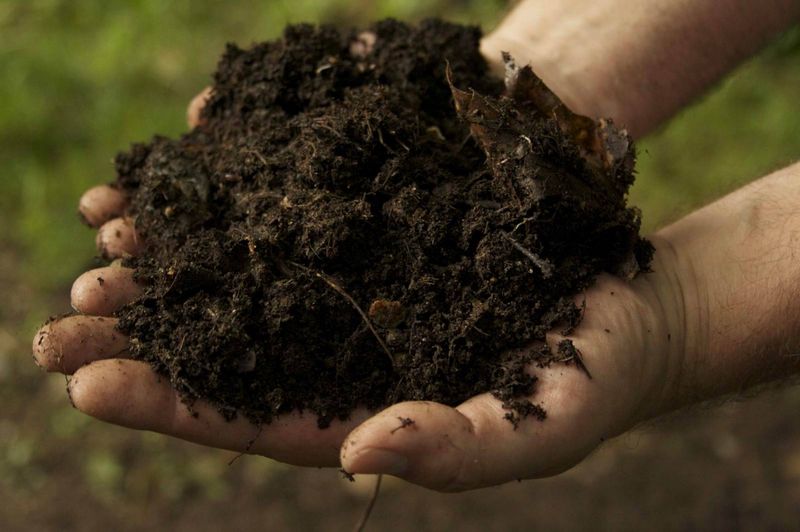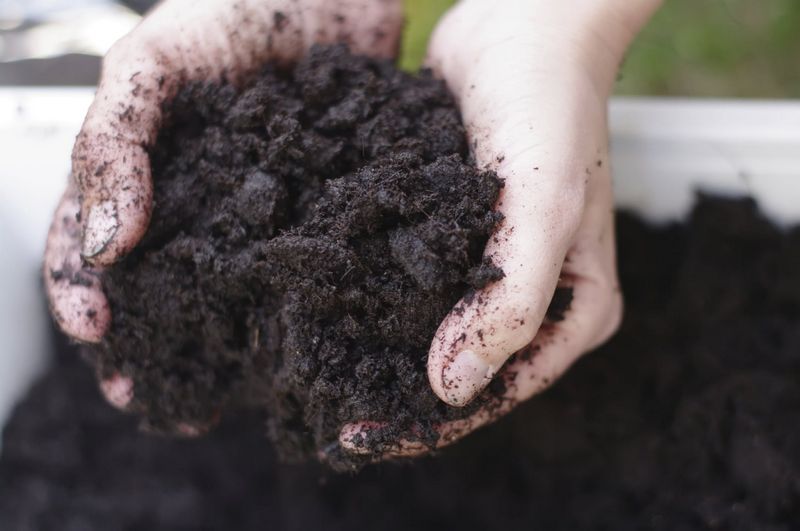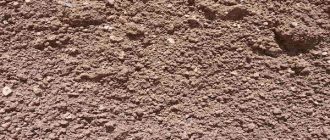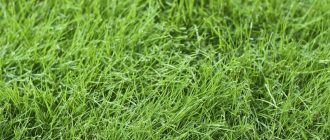
All About Lightweight Soils: Everything You Need to Know
If you’re looking to create a beautiful garden or enhance your landscaping, it’s important to know everything about lightweight soils. These unique soils offer numerous benefits and can make a significant difference in the success of your plants. Whether you’re a seasoned gardener or just starting out, understanding the characteristics and advantages of lightweight soils is essential.
Lightweight soils are specifically formulated to be lighter in weight compared to traditional soils. They are made from a combination of organic and inorganic materials, such as compost, peat moss, perlite, and vermiculite. This blend creates a porous structure that promotes better drainage and aeration for plant roots, preventing waterlogged soil and allowing for enhanced root development. Additionally, the lightweight nature of these soils makes them easier to handle and work with, reducing the strain on your back and allowing for easy transportation.
One of the most significant benefits of lightweight soils is their ability to retain moisture while still providing excellent drainage. This means you’ll have to water your plants less frequently while ensuring that the root zone remains adequately hydrated. Furthermore, the porous structure of lightweight soils allows for better absorption of nutrients, promoting healthier growth and vibrant blooms. Whether you’re growing flowers, vegetables, or shrubs, lightweight soils can provide the perfect environment for your plants to flourish.
Expert Tip: When using lightweight soils, it’s crucial to regularly monitor the moisture levels to avoid overwatering. These soils drain faster than traditional ones, so you may need to adjust your watering schedule accordingly.
In summary, lightweight soils have revolutionized the gardening world by offering a wealth of benefits. From improved drainage and aeration to better moisture retention and nutrient absorption, these soils provide the optimal conditions for plant growth. Whether you have a small container garden or a large landscaping project, using lightweight soils can significantly improve the success of your plants. So, the next time you’re looking to create a beautiful garden, make sure to consider the many advantages of lightweight soils.
What are Lightweight Soils?
When it comes to gardening and landscaping, knowing about lightweight soils is essential. Lightweight soils are specially formulated soils that are designed to have a lower density than traditional soils. They are created by mixing organic matter, such as compost or peat moss, with mineral components like vermiculite or perlite. This combination creates a soil that has excellent drainage and aeration properties.
One of the main benefits of using lightweight soils is that they are easier to work with due to their lighter weight. This makes them ideal for applications where weight is a concern, such as rooftop gardens or containers. They also have a higher water-holding capacity compared to traditional soils, which means they require less frequent watering.
Lightweight soils are also known for their ability to provide good root support and promote healthy plant growth. The increased drainage and aeration properties allow plant roots to access oxygen more easily and prevent waterlogged conditions that can lead to root rot. This makes lightweight soils an excellent choice for plants that prefer well-drained soil conditions.
Another advantage of using lightweight soils is that they can be easily amended and customized to suit different plant types and growing conditions. By adjusting the ratio of organic matter to minerals, gardeners and landscapers can create a soil mix that is tailored to the specific needs of their plants. This flexibility allows for optimal plant growth and can help prevent nutrient deficiencies or excesses.
| Lower density |
| Excellent drainage and aeration |
| Lightweight and easier to work with |
| Higher water-holding capacity |
| Good root support and promotes healthy plant growth |
| Customizable for different plant types and growing conditions |
In summary, lightweight soils are a versatile and practical option for gardeners and landscapers who want to achieve optimal plant growth in a variety of settings. With their beneficial properties and ability to be customized, lightweight soils have become a go-to choice for many horticulture enthusiasts. By understanding the benefits and characteristics of lightweight soils, you can make informed decisions about which soil type is best for your gardening and landscaping needs.
Benefits of Lightweight Soils
When it comes to lightweight soils, there are several benefits that you should know about. These soils are specifically designed to be lighter in weight than traditional soils, making them ideal for a variety of applications.
One of the main benefits of lightweight soils is their ease of handling. Due to their reduced weight, they are much easier to transport and spread, saving you time and effort. Whether you are a homeowner looking to undertake a DIY project or a professional landscaper working on a large-scale job, lightweight soils can make your work significantly easier.
Another advantage of lightweight soils is their improved drainage capabilities. These soils are typically engineered with a high percentage of organic matter and porous materials, allowing for better water flow and drainage. This can help prevent waterlogging and improve the overall health of your plants and turf.
In addition, lightweight soils have enhanced aeration properties. The porous nature of these soils allows for increased airflow and oxygen circulation to plant roots. This can result in healthier root systems and improved plant growth.
Furthermore, lightweight soils also offer excellent insulation properties. Their unique composition helps to regulate soil temperature, protecting plants from extreme heat or cold. This can be particularly beneficial for plants that are sensitive to temperature fluctuations.
Overall, lightweight soils provide numerous benefits that make them a suitable choice for a wide range of landscaping and gardening projects. Whether you are looking to improve drainage, enhance aeration, or simply make your job easier, lightweight soils have everything you need.
Types of Lightweight Soils
When it comes to lightweight soils, there are several types that you need to know about. These soils are specifically designed to be lighter in weight compared to traditional soil options. Below are some of the most common types of lightweight soils:
1. Perlite: Perlite is a popular lightweight soil option made from volcanic glass. It is characterized by its white color and porous texture. Perlite has excellent water retention properties and is often used in potting mixes and hydroponic systems.
2. Vermiculite: Vermiculite is another commonly used lightweight soil. It is a mineral that is mined and processed into small flakes. Vermiculite has incredible water holding capacity and is often used in seed starting mixes to promote germination.
3. Peat Moss: Peat moss is a lightweight soil amendment that is derived from sphagnum moss. It has excellent moisture retention properties and is often used to improve soil structure and add organic matter to gardens and potted plants.
4. Cocopeat: Cocopeat, also known as coir or coconut coir, is a lightweight soil made from coconut husks. It has good moisture retention properties and is often used as a sustainable alternative to peat moss. Cocopeat is commonly used in hydroponic gardening as well.
5. Expanded Clay Pellets: Expanded clay pellets, also known as hydroton or clay pebbles, are lightweight soil additives made from clay that has been heated and expanded. They provide excellent drainage and aeration to plant roots and are often used in hydroponic systems.
These are just a few examples of the different types of lightweight soils available. Each type has its own unique properties and uses. Understanding the characteristics of these soils will help you choose the right option for your gardening needs.
Characteristics of Lightweight Soils
When it comes to lightweight soils, it is important to understand all the characteristics that define them. Everything you need to know about these soils, from their composition to their properties, can help you in various landscaping and construction projects.
One of the main characteristics of lightweight soils is their low density. These soils are much lighter than traditional soils, which makes them easier to handle and transport. This is especially useful when working on projects that require large amounts of soil, such as green roofs or raised beds.
In addition to their low density, lightweight soils also have excellent drainage capabilities. These soils are typically made up of a mix of organic material, such as peat or compost, and inorganic materials, such as perlite or vermiculite. This composition allows water to drain quickly and efficiently, preventing waterlogging and keeping plants healthy.
Another characteristic of lightweight soils is their ability to retain moisture. While they drain well, they also have a good capacity to hold water and provide the necessary moisture for plant growth. This is especially beneficial in dry climates or when working with plants that have specific moisture requirements.
Furthermore, these soils are often rich in nutrients. The organic materials used in their composition provide a steady supply of nutrients to plants, promoting healthy growth and development. This can be particularly advantageous in gardens or agricultural applications where plants need ample nutrition.
Finally, lightweight soils are easily customizable. Depending on the specific project requirements, the composition of these soils can be adjusted to meet the needs of different plants and environments. This flexibility allows for optimal growing conditions and ensures the success of landscaping or gardening endeavors.
In conclusion, understanding the characteristics of lightweight soils is essential for any project that requires the use of these specialized soils. From their low density and excellent drainage capabilities to their moisture retention and nutrient-rich composition, these soils offer a range of benefits for landscaping, gardening, and construction purposes.
Uses of Lightweight Soils in Gardening
Lightweight soils are an essential component in gardening as they offer several benefits to plants and gardeners. Here are some of the uses of lightweight soils in gardening:
| 1. Improved Drainage | Lightweight soils have excellent drainage properties, allowing excess water to flow through easily. This is beneficial for plants that prefer well-drained soil or are prone to root rot. |
| 2. Reduced Weight | One of the main advantages of lightweight soils is their reduced weight compared to traditional soils. This makes them easier to handle and manipulate, especially in container gardening. |
| 3. Increased Aeration | Lightweight soils have a loose structure, providing ample air space for plant roots. This promotes better root growth and oxygen uptake, leading to healthier and stronger plants. |
| 4. Enhanced Nutrient Retention | Despite their lightweight nature, these soils are still capable of retaining essential nutrients. This ensures that plants receive a consistent supply of nutrients for optimal growth and development. |
| 5. Versatile Applications | Lightweight soils are versatile and can be used in various gardening applications. They are suitable for container gardening, raised beds, and as a component in soil mixes for specific plant varieties. |
| 6. Sustainable Gardening | Using lightweight soils in gardening promotes sustainable practices. These soils are often made from recycled materials, reducing the need for virgin resources and minimizing environmental impact. |
In conclusion, lightweight soils offer numerous advantages in gardening, including improved drainage, reduced weight, increased aeration, enhanced nutrient retention, versatile applications, and sustainable practices. Incorporating lightweight soils into your gardening routine can help create optimal growing conditions for your plants while also benefiting the environment.
How to Choose the Right Lightweight Soil?
When it comes to choosing the right lightweight soil, there are a few factors you need to consider. Here is everything you need to know:
1. Purpose: Determine the purpose of the soil. Are you using it for potting plants, starting seeds, or filling raised beds?
2. Plant Requirements: Understand the requirements of the plants you will be growing. Some plants prefer well-drained soil, while others thrive in moisture-retaining soil.
3. Composition: Lightweight soils are typically a mix of organic and inorganic materials. Consider the composition based on the needs of your plants.
4. Drainage: Ensure the soil has good drainage to prevent waterlogging. Look for a soil mix with perlite or vermiculite to improve drainage.
5. Moisture Retention: If you live in a dry climate or will be unable to water your plants frequently, choose a lightweight soil that retains moisture for longer periods.
6. Nutrient Content: Check the nutrient content of the soil. Some lightweight soils may not have enough nutrients for plants, so you may need to supplement with fertilizers.
7. Quality: Look for high-quality lightweight soils from reputable brands. Avoid soils that contain a lot of fillers or have a musty smell.
By considering these factors, you can choose the right lightweight soil that will provide optimal growing conditions for your plants.
How to Prepare Soil for Lightweight Soil Mixtures?
When it comes to lightweight soils, proper soil preparation is crucial in order to create an ideal growing environment for your plants. Here are a few steps you need to follow:
1. Assess your soil: Before preparing your soil, it is important to understand its current composition. Lightweight soils are typically low in nutrients and organic matter, so you may need to amend it accordingly.
2. Remove debris: Clear the area of any rocks, roots, or large clumps of soil. This will help create a smooth and even planting surface.
3. Choose the right amendments: To improve the fertility and texture of your lightweight soil, consider adding organic matter such as compost, peat moss, or coconut coir. These amendments will help retain moisture and provide essential nutrients for plant growth.
4. Mix thoroughly: Once you have selected your amendments, blend them well with the existing soil. Use a garden fork or a tiller to incorporate the amendments evenly throughout the soil.
5. Test the pH: Lightweight soils tend to be slightly acidic, so it is essential to check the pH level. You can use a pH testing kit or send a soil sample to a laboratory for analysis. Adjust the pH as needed by adding lime or sulfur.
6. Ensure proper drainage: Lightweight soils drain quickly, which can be beneficial for some plants. However, excessive drainage can lead to water and nutrient leaching. To improve drainage, consider adding perlite or vermiculite to the soil mixture.
7. Allow the soil to settle: After mixing all the amendments, allow the soil to settle for a few days before planting. This will help the soil components blend together and create a stable growing medium.
By following these steps, you can effectively prepare your soil for lightweight soil mixtures, providing optimal conditions for plant growth and ensuring successful gardening outcomes.
Best Plants for Lightweight Soils
When it comes to lightweight soils, it’s important to choose plants that can thrive in these specific conditions. The right plants can make all the difference in the health and overall appearance of your garden. Here are some of the best plants that you need to know about for lightweight soils:
Sedums: Sedums are versatile plants that can tolerate a wide range of soil conditions, including lightweight soils. They have fleshy leaves and vibrant blooms that add beauty to any garden. Sedums are also drought-tolerant, making them an excellent choice for gardens with sparse rainfall.
Lavender: Lavender is a fragrant and hardy plant that thrives in well-drained soils, including lightweight soils. It has beautiful purple flowers that attract bees and butterflies, making it a great choice for pollinator gardens.
Yarrow: Yarrow is a tough perennial that can grow in almost any soil condition, including lightweight soils. It has feathery foliage and clusters of vibrant flowers that can add a pop of color to your garden. Yarrow also attracts beneficial insects, such as ladybugs and lacewings.
Verbena: Verbena is a low-maintenance plant that thrives in lightweight soils. It has clusters of small flowers that come in a variety of colors, including pink, purple, and white. Verbena is also a great choice for attracting butterflies to your garden.
Daylilies: Daylilies are hardy plants that can tolerate various soil conditions, including lightweight soils. They have trumpet-shaped flowers that bloom in a wide range of colors, adding beauty to your garden. Daylilies are also low-maintenance and can tolerate drought conditions.
These are just a few examples of the many plant options available for lightweight soils. Before choosing plants for your garden, be sure to research their specific soil requirements to ensure they will thrive in your specific conditions. With the right plants, your lightweight soil can be transformed into a thriving and beautiful garden.
How to Nurture Lightweight Soil? Tips and Tricks
When it comes to lightweight soils, it’s important to understand how to properly care for and nurture them. Here are some tips and tricks:
1. Watering: Lightweight soils tend to drain water quickly, so it’s important to water them more frequently. However, be careful not to overwater, as it can lead to waterlogged soil and root rot. Regularly check the moisture levels and adjust your watering schedule accordingly.
2. Fertilizing: Lightweight soils may lack essential nutrients, so it’s important to regularly fertilize them. Choose a balanced fertilizer that is high in organic matter and follow the recommended dosage on the packaging. This will help provide the necessary nutrients for plant growth and development.
3. Organic matter: Adding organic matter such as compost or well-rotted manure can greatly improve the quality of lightweight soils. Organic matter helps retain moisture, improves soil structure, and provides essential nutrients for plant growth. Mix in organic matter before planting or top-dress existing plants regularly.
4. Mulching: Mulching is beneficial for lightweight soils as it helps retain moisture and control temperature fluctuations. Use organic mulch, such as wood chips or straw, to cover the soil surface. This will help conserve moisture, suppress weeds, and provide a protective layer for the soil and plant roots.
5. Regular monitoring: Keep a close eye on your lightweight soil and plants. Regularly monitor for signs of nutrient deficiencies, pests, or diseases. Adjust your care routine as needed and address any issues promptly to ensure the health and vitality of your plants.
6. Proper drainage: Ensure that your lightweight soil has proper drainage to prevent waterlogging. If your soil doesn’t drain well, consider amending it with coarse sand or perlite to improve drainage. Adequate drainage is crucial for the root health and overall plant growth.
By following these tips and tricks, you can nurture your lightweight soil and create an ideal environment for healthy plant growth. Remember, lightweight soils require special care and attention, but with the right approach, they can support thriving plants.
Frequently asked questions:
What are lightweight soils?
Lightweight soils are types of soil that have low density and are made up of materials that are lighter in weight compared to traditional soil. These materials may include perlite, vermiculite, peat moss, or coconut coir.
What are the benefits of using lightweight soils?
There are several benefits to using lightweight soils. Firstly, they are easier to handle and transport due to their lighter weight. Secondly, they provide better aeration and drainage for plants, which can promote healthier root growth. Additionally, lightweight soils are often sterile and free from pests and diseases, reducing the risk of plant damage.
Can lightweight soils be used for all types of plants?
While lightweight soils can be used for a wide range of plants, they may not be suitable for all types. Some plants, such as those that require a lot of water or have heavy root systems, may not thrive in lightweight soils. It’s important to consider the specific needs of your plants before using lightweight soils.
How often should lightweight soils be watered?
The frequency of watering lightweight soils depends on various factors, such as the type of plant, climate, and soil composition. Generally, lightweight soils tend to drain more quickly than traditional soils, so they may require more frequent watering. However, it’s important to monitor the moisture level of the soil and adjust the watering schedule accordingly.
Can lightweight soils be used for indoor gardening?
Yes, lightweight soils can be used for indoor gardening. In fact, they are often preferred for indoor plants due to their lighter weight and better drainage. Lightweight soils can help prevent overwatering and the development of mold or fungus, which can be common issues in indoor environments.







